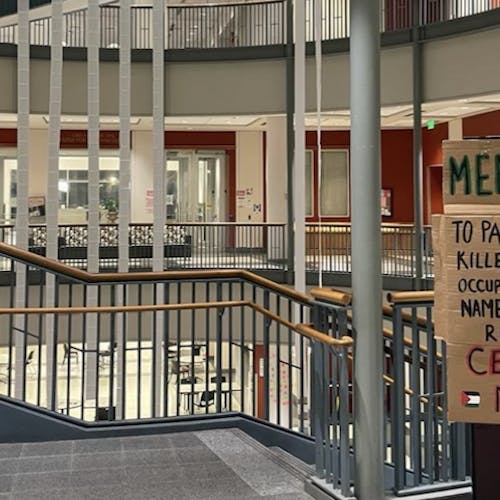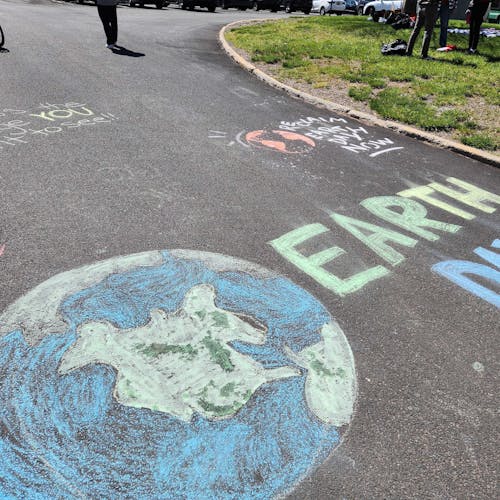Rutgers geography professor discusses mental maps of North, South Jersey

It is difficult for professors to encourage class participation, but when Michael Siegel showed his students a “mental map” of North Jersey and South Jersey, a heated debate was ignited.
A modern-day mental map is based on a person’s point-of-view perception of an area rather than on physical geographic features.
“It’s interesting that people have such a strong sense of place and identity in terms of North Jersey and South Jersey,” said Siegel, a professor in the Department of Geography. “Where does that feeling come from? It doesn’t come from any maps. It’s not an official boundary. It’s a sense we have.”
There are clear differences in the physical environment of North and South New Jersey as well. Where the south has more flat, sandy soil responsible for the pine barrens, the northwest is more rocky and hilly.
But physical differences only scratch the surface.
Hoagies or subs. Jimmies or sprinkles. Wawa or Quick Chek. Students from New Jersey likely have a preference, depending on where they live.
Turnpike exits and area codes are two simple identifiers that New Jerseyans use to pinpoint where they are from.
When area codes were first used in 1947, Siegel said there was one code per state. But 10 years later, as the population increased, New Jersey was split into two area codes— “201” and “609.”
“If you had a '201' area code, that meant North Jersey. If you had a '609' area code, that meant South Jersey,” he said. “People latched onto these area codes as identifiers of where they are from.”
Proximity to Philadelphia or New York City contributes to a cultural differentiation among people, Siegel said. The sports teams people root for and media they consume largely depends on which metropolitan area they live near — a South Jerseyan might cheer for the Philadelphia Eagles, whereas a North Jerseyan is more likely to defend the New York Giants.
Even language and dialect can be affected by one’s proximity to Philadelphia and New York City.
“Whether you call it a sub sandwich or a grinder or a hoagie could depend on where you live,” Siegel said.
Transportation methods may also affect differences between the people of North Jersey and South Jersey.
Parts of New Jersey transformed from agricultural to industrial practices when Routes 78 and 80, two highways heading westbound and eastbound, were built, Siegel said.
"The whole state was into farming, but as the road network was created and people were able to move out from the cities more easily, it basically transformed into a much more suburban state," Siegel said. "The people living in areas of northwest Jersey and South Jersey that don't have highways going into them and only have railways for commuting into the New York and Philadelphia are affected by this."
Still, many debate the existence of Central Jersey.
Fifty-five percent of respondents to a NJ.com survey said Central Jersey exists, totaling 50,000 votes out of 91,000.
Jessica Jaw, a School of Arts and Sciences senior, has been a resident of East Windsor for 22 years and considers the area to be Central Jersey.
"I can kind of see why people think Central Jersey is just South Jersey, but I also think they're wrong," she said.
Central Jersey takes influence from both North and South Jersey, she said.
"I just don't see myself fitting in with either of those options," she said. "We're more of like, a melting pot of both. Like North Jersey, I call my sandwiches 'subs' and not 'hoagies,' but like South Jersey, I think it's 'pork roll' and not 'Taylor Ham.'"
But Central Jersey's boundary is at the heart of the debate.
Toms River, Brick and Lacey were among the towns that were considered the lowest point of Central Jersey, with some NJ.com respondents considering the areas South Jersey. Woodbridge, Watchung and Raritan Hunterdon Co. were all considered to be on the brink of North and Central Jersey.
North Jersey has more than double the population of South Jersey, according to U.S. Census data. Sixty-four percent of Central Jersey's population voted for Gov. Chris Christie during the last election, more than both North and South Jersey, NJ.com reported.
"The geographical location probably has to do with the differences. South Jersey definitely has a lot more Philly influences, and they love their beaches," Jaw said. "North Jersey, I think of people commuting to and from New York on the daily."
Avalon Zoppo is a School of Arts and Sciences sophomore majoring in political science. She is the managing editor of The Daily Targum. Find her on Twitter @avalonzoppo.



